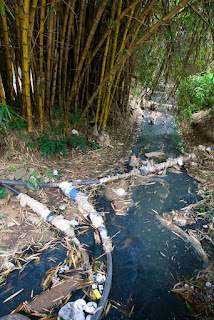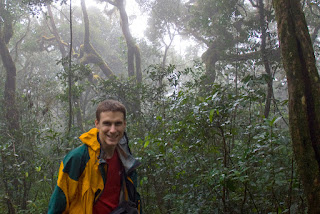Stories about Indian vehicles, traffic and safety on the road could fill a whole book - I am not joking! The roads are the real places of action and allegory for the fast growing and developing country. Every day I witness funny as well as frightening scenes. In course of this post I will try to pick out some highlights.
Let's begin with a selection of the most important vehicles, listed according to the degree of dangerousness:
1. Autorichshaw (known as tuk-tuk):
These yellow and black coloured three-wheelers are quite low in road-hierarchy but rule the traffic through their enormous number. They are noisy and polluting, still everyone is glad they exist as it is a very cheap way to get everywhere in town. Not caring about driving rules is very common (sometimes I wonder if such rules exist at all). The rickshaw-drivers are leaders in this discipline.
2. Two-wheelers:
Only scooters and motorcycles equals the number of autorickshaws. The totally incalculable two-wheelers must be the horror for every car driver. They suddenly appear out of the nowhere, take over at distances of some 5 cm, or wriggle through traffic jams. Especially the load factor of the two-wheelers still impresses me: e.g. about 30 chicken, 5 gas cylinders, the whole inventory of a small shop or a whole family consisting of 4 people (of which only the father wears a safety helmet!).
 |
An army of polluting motorcycles building the front of a traffic jam; no wonder that the traffic policeman is wearing a mask |
 |
The load factor of motorcycles or scooter can be very impressive |
 |
Safety helmets are very rare although they are said to be mandatory
|
|
3. Trucks:Size definitely matters on the road! Paying special attention when a truck appears is really advisable.
 |
India's favourite truck: an Ashok-Leyland model (I still can't believe that this old-fashioned model is still produced); there are even models where the driver sits open-air |
4. Buses:
There are basically two kinds of buses: air-conditioned (A/C) and non-A/C. I can assure you that riding on a non-A/C bus is an thrilling experience. I will have to repeat that again! Driving in bus is quite safe as the same rule as for the trucks applies: big vehicles enjoy a lot of respect on the road.
 |
A typical non-A/C bus which is normally totally overcrowded |
5. Cars:
The famous Ambassador, a copy of the old British Morris Oxford is said to be the most common car on Indian's roads. This does not apply to Bangalore anymore. Brands like Tata, Hyundai, Maruti Suzuki and other Asian models are dominating the roads nowadays. Western style cars are rare; having learnt that the import taxes for these cars can reach 180%, this is not astonishing to me anymore.
 |
A classical Ambassador in a unexpectedly good state |
Common to all sorts of vehicles is the knick-knack which decorates the inside and outside of any item with wheels: flower garlands, adhesive labels of all kind, hand-made paintings and garnishments (I fear that the vehicles would fall apart without the massive quantities of colour...) or all sorts of religious symbols and statues (judging by the driving style this is probably a good idea!). Gadgets such as a very loud hi-fi system, joss sticks in the whole car, curtains or carpets are likewise important. In contrast, safety measures are absent and it seems like no one is missing them! To give you an example: seat-belts are lacking in our company-minibus and in brand-new cars they just won't be used. The same applies for safety-helmets: if a motorcyclist is wearing one at all you can be sure that the helmet-belt is open...
I would like to end this post with some funny inscription which are often painted on commercial vehicles:
"PLEASE SOUND HORN" or "SOUND HORN OK"
Most of the big trucks features this sign. It demands overtaking cars to sound the horn. This is probably a good idea as rear -view mirrors are often missing. But you can certainly imagine what the consequences in terms of nuisance are.
"A/C VEHICLE - NO HAND SIGNAL"
I needed some days to figure this one out! Instead of using the direction indicator (which is often defective or not even present) Indian driver use a repertoire of hand gestures! For a right turn this is no problem as the driver sits on the right hand side. For left turns it is getting much more difficult especially if there is no co-driver... Anyway, A/C buses often exhibit the mentioned inscription just to tell the driver behind that the windows in the A/C-bus are closed and that giving hand is not possible!
And sometimes I find some nice examples of Indian English such as:
"PLEASE KEEP DESTANCE ME".

_edited.jpg)






















































